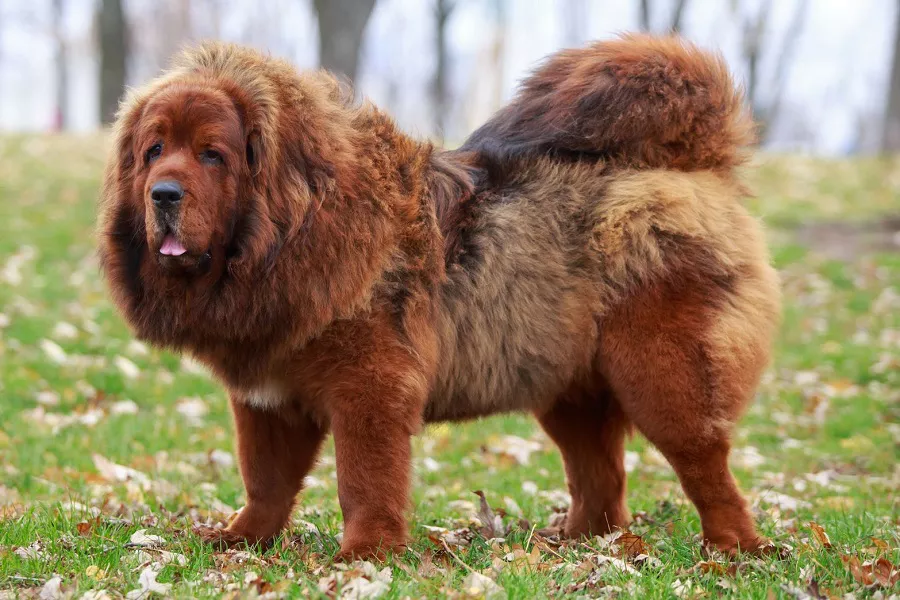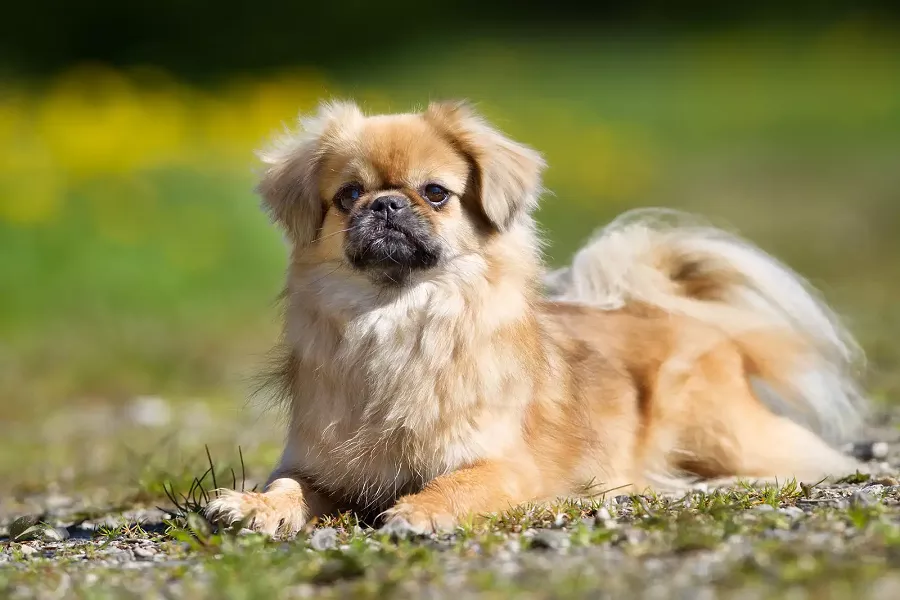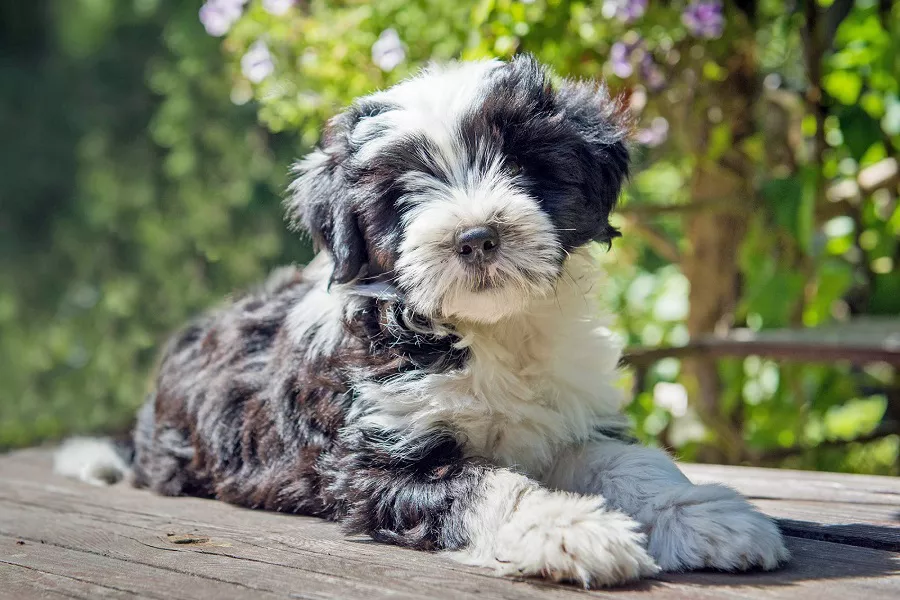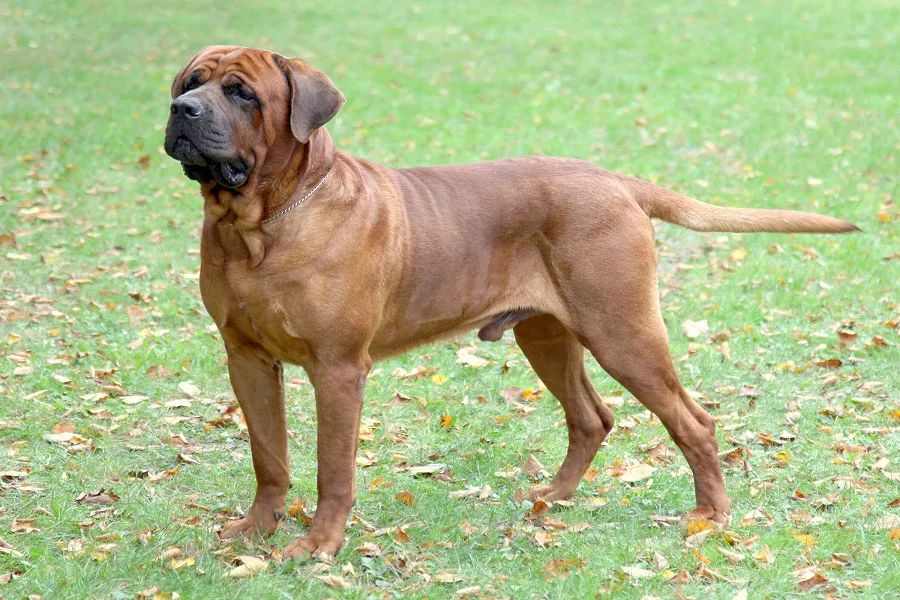What is a tibetan mastiff?
The Tibetan Mastiff, belonging to the Mastiff class, is a large dog with a ferocious personality. Its coat color is mostly iron-clad gold, yellow, black (black is not pure black, but slightly white hair on the chest and limbs), etc., native to the Qinghai-Tibet Plateau. It has a strong temperament, noble and proud, powerful, agile and vigorous, and has poor endurance. The puppies have poor memory before adulthood.
What does a tibetan mastiff look like?
Ears are medium in size, V-shaped, hanging naturally, set close to the front of the face, raised naturally when alert, covered with short, soft down. The forehead is deep and obvious. The eyes are medium in size, deep, almond-shaped and slightly slanted. Shining light in the dark, very divine. The face is broad and the bridge of the nose is firm. The nose is broad and large, turned inside and outside. The shoulders are smooth and the backbone is well muscled. Forefeet Cat feet, fairly large, strong and strong, with hair between toes. Nails may be black or white. A single dangling toe may appear. The hind legs are strong, muscular and angular on all parts. Viewed from behind, the hind legs and knees are parallel. The hocks are strong and drop naturally perpendicular to the feet.
Tibetan mastiff living habits
The dog’s mood is generally calm or flat, but external stimuli can make the dog’s mood excited or particularly excited. Generally speaking, the emotions of dogs are nothing but joy, anger, sadness, joy and fear. A careful owner will find out from his usual observation, that is, a newly purchased dog, which has been tested by experienced dog breeders in 10 years. ~15 days of feeding and observation, you can also understand its different emotions.
There are two main ways that dogs express emotions: one is expressed by action behavior, and the other is expressed by barking “language”. Action-behavioral representations and bark “language” representations are often combined and expressed simultaneously and are difficult to separate. For the sake of illustration, here is an example: almost all dogs, when they see the familiar relatives in the owner’s house, often wag their tails while sniffing, and follow them closely, showing an affectionate look; seeing them for several days When they do not see their master, they are more affectionate. Not only do they wag their tails while sniffing, but in most cases, they will suddenly stand on their hind feet, put a pair of front feet on the master’s chest, sniff the master’s face, and even lick the master’s face with their tongues. The owner’s face and hands sometimes make a “woo woo” sound, with a particularly affectionate expression, just like a close relative who has not seen for many years or a close friend who shares weal and woe by chance encounter, even the owner’s usual password to rush it is not heard, and the tail is wagging. Follow the master closely.
Tibetan mastiff rearing
1. The puppies grow rapidly within one month after birth, and have a strong appetite. Breast milk generally cannot meet their food needs. Therefore, appropriate amounts of dog food should be supplemented, and liquid food with high nutritional value and easy digestion and absorption should be selected. For example, milk powder, broth, cooked egg yolk or gruel can be added to milk, and cod liver oil and vitamins can be added to supplement the Tibetan mastiff with more nutrition. Otherwise, the Tibetan mastiff may become weak and sick due to malnutrition, and it will also affect the growth of the Tibetan mastiff. development.
2. After the deciduous teeth of the Tibetan mastiff grow out, if the economic conditions permit, the pet owner can feed the Tibetan mastiff cub some food such as cartilage of pigs and cows. Remember not to feed the Tibetan mastiff to eat chicken bones. You can also give some spare ribs to try to let the little Tibetan mastiff chew, which can stimulate its gum development and help the Tibetan mastiff cubs grow permanent teeth.
3. When feeding Tibetan mastiffs, you should pay attention to supplement calcium powder and vitamins required for tooth and bone development. In particular, purebred dogs with thick bones need more calcium in childhood. Puppies are generally under 1 year old. During the growth process, calcium powder needs to be supplemented every day, about 1 teaspoon per 2kg body weight. With age, calcium powder and dosage should be increased proportionally.
4. Generally, Tibetan Mastiff cubs have the habit of gluttony, so when the pet owner is feeding, they must pay attention to watching it eat, do not let it be too full, generally eat 80% full, and eat too full It will cause the Tibetan Mastiff to be too full and indigestion. It is recommended that the pet owner follows the principle of eating less and drinking more when feeding the Tibetan Mastiff.

























